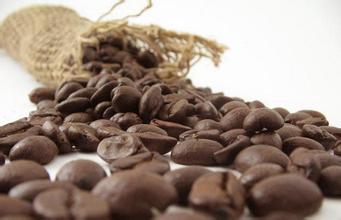The older and stronger the acidity, the flavor and taste of Brazilian coffee. Introduction to the characteristics of fine coffee in the manor area.
In the 1630s Portuguese expeditions were sent to establish colonies in Pakistan. The governor was appointed in 1549. Later, the whole colony was unified along the Atlantic coast under Portugal rule. The French invaded in 1555 and occupied what is now Rio de Janeiro, intending to establish a French colonial stronghold in South America. However, since the French were unable to attract colonists from Europe, they were finally expelled from Rio by the Portugal in 1565. Two years later, the Portugal founded Rio. Portugal sovereignty over Brazil was not challenged again until 1630.
Napoleon invaded Portugal in 1807 and the Portuguese royal family moved to Brazil. In 1820, the Portuguese royal family moved back to Lisbon, and Prince Pedro remained as regent. On September 7, 1822, it declared complete independence from Portugal and established the Brazilian Empire. He was crowned emperor and called Pedro I. In 1824 Brazil promulgated the Constitution. In 1825, Portugal recognized Brazilian independence.
During the imperial period (1822~1889), after the establishment of the Brazilian Empire, the Braganza Dynasty system and Portugal aristocratic power remained intact, the large manor system and slavery still existed, and Brazil was economically and politically dependent on Britain. Pedro I ruled despotically, forcibly dissolving Parliament in 1823, and then suppressing by force the Republican insurrection in the northeastern provinces of Pernambuco, Brazil has three major river systems: Amazon, Parana and San Francisco. The rivers are numerous, long in length and large in water volume, mainly distributed in the northern plain area. [8]Brazil's southwest water conservancy hub-Itaipu hydropower station.
Amazon River is 6751 kilometers long, traversing northwest Brazil, covering an area of 3.9 million square kilometers in Brazil; Parana River system includes Parana River and Paraguay River, flowing through southwest, with many rapids and waterfalls, rich in hydraulic resources; San Francisco River system is 2900 kilometers long, flowing through arid northeast, and is the main irrigation water source in the region. The coastline is more than 7400 kilometers long, the width of the territorial sea is 12 nautical miles, and the exclusive economic zone outside the sea is 188 nautical miles.
Although coffee is diverse, Brazilian coffee is suitable for the taste of the masses. For example: coffee produced in northern coastal areas has a typical iodine taste, reminiscent of the sea after drinking. This coffee is exported to North America, the Middle East and Eastern Europe. Another coffee that is interesting and worth pursuing is rinsed Bahia coffee. This coffee is not easy to find, because Brazil is the world's largest coffee consumer after the United States, and many of the best coffees can only be found in its domestic market.
In Brazil, the largest crop is Robett coffee. This coffee is sold in supermarkets. Brazilian Roscoff coffee, sold under the name Conillon, accounts for 15 percent of total production.
Old bourbon coffee is grown on estates in Cerrado district, Minas Greais state, in southeastern Brazil. Old bourbon coffee grown on these estates, such as Capin Branco and Vista Allegre, is also sold in the market. Although they come from the same region, these coffees have their own characteristics. Capin Blanco is softer than Vista Allegra, which is strong and dark and has lower acidity. However, like all Brazilian coffees, they are best served fresh because the older they are, the stronger the acidity. These coffee growers have organized themselves into the Speciality Coffee Association of Brazil, which differs from the past in that Brazil's economy is now less dependent on coffee, which accounts for only 8 - 10% of GDP. Before World War II, Brazil accounted for 50% or more of the world's coffee production, and now it is close to 30%, but the country's influence on coffee worldwide, especially on coffee prices, is significant. For example, two frosts in 1994 caused a sharp rise in global coffee prices.
Coffee production has gradually become a science since the introduction of coffee trees from Guyane française in 1720. Before 1990, the Brazilian government strictly controlled the coffee industry, with both severe interference and price protection measures, and the state has always implemented minimum price protection measures for farmers, resulting in coffee overproduction. At one point before World War II, there were 78 million bags left in stock, which had to be burned or thrown into water.
Since 1990, when the free market opened up, the former Brazilian Coffee Authority (IBC) has been replaced by a non-investment administrative body of the state, the National Economic Association, which pursues a policy of non-interference and allows producers to negotiate directly with exporters. The activities of exporters are monitored by government legislation and legal exporters are registered by the relevant authorities.

Important Notice :
前街咖啡 FrontStreet Coffee has moved to new addredd:
FrontStreet Coffee Address: 315,Donghua East Road,GuangZhou
Tel:020 38364473
- Prev

Taste characteristics of sweet, smooth and slightly bitter western coffee varieties introduction to the flavor of fine coffee beans in the manor
Brazilian coffee generally refers to coffee produced in Brazil. There is a wide variety of Brazilian coffee, the vast majority of which are unwashed and sun-dried, classified according to the name of the state of origin and the port of transport. Brazil has 21 states and 17 states produce coffee, but four of them produce the largest, accounting for 98% of the country's total output. Brazilian coffee has a low sour taste, which goes well with coffee.
- Next

Introduction to the flavor and taste characteristics of Kenyan coffee manor with low acidity and strong taste
The coastal areas are plains, and most of the rest are plateaus with an average elevation of 1500 meters. The East African Rift Valley, Mount Kenya, the highest peak in Kenya, the eastern branch of Mount Kenya cuts across the north and south of the plateau, dividing the highland into east and west. The bottom of the Great Rift Valley is 450 miles below the plateau and 100 kilometers wide, with lakes of varying depths and many volcanoes standing. The northern part is
Related
- Detailed explanation of Jadeite planting Land in Panamanian Jadeite Manor introduction to the grading system of Jadeite competitive bidding, Red bid, Green bid and Rose Summer
- Story of Coffee planting in Brenka region of Costa Rica Stonehenge Manor anaerobic heavy honey treatment of flavor mouth
- What's on the barrel of Blue Mountain Coffee beans?
- Can American coffee also pull flowers? How to use hot American style to pull out a good-looking pattern?
- Can you make a cold extract with coffee beans? What is the right proportion for cold-extracted coffee formula?
- Indonesian PWN Gold Mandrine Coffee Origin Features Flavor How to Chong? Mandolin coffee is American.
- A brief introduction to the flavor characteristics of Brazilian yellow bourbon coffee beans
- What is the effect of different water quality on the flavor of cold-extracted coffee? What kind of water is best for brewing coffee?
- Why do you think of Rose Summer whenever you mention Panamanian coffee?
- Introduction to the characteristics of authentic blue mountain coffee bean producing areas? What is the CIB Coffee Authority in Jamaica?

